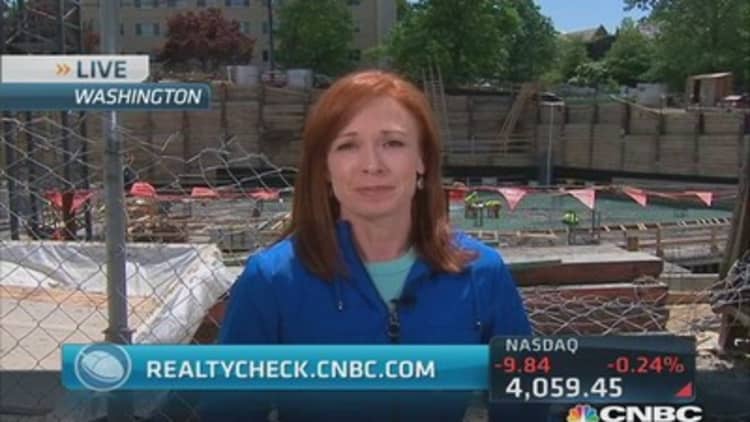
Buyers looking for affordable homes aren't finding much in today's housing market. While investors snatched up most foreclosures, another after effect of the crash is keeping supply short: negative equity. Nearly 10 million borrowers still owe more on mortgages than their homes are currently worth, according to Zillow. That has kept them stuck in place.
As home prices rise, the nation's negative equity or "underwater" rate is falling overall, but affordable homes are still drowning disproportionately. They are three times more likely to be underwater than expensive homes, according to Zillow. Thirty percent of mortgaged homes in the bottom price tier ($98,400 and below) are in negative equity, compared with 18 percent in middle tier ($98,400 to $306,700) and 10.7 percent in top tier ($306,700-plus).
"The unfortunate reality is that housing markets look to be swimming with underwater borrowers for years to come," said Zillow Chief Economist Stan Humphries. "It's hard to overstate just how much of a drag on the housing market negative equity really is, especially at the lower end of the market, which represents those homes typically most affordable for first-time buyers. Negative equity constrains inventory, which helps drive home values higher, which in turn makes those homes that are available that much less affordable."
Thousands of borrowers have resorted to short sales over the past several years, negotiating with banks to let them sell their homes for less than the value of the mortgage; that option is no longer attractive because Congress allowed the Mortgage Forgiveness Debt Relief Act, passed in 2007, to expire. Short sellers are now liable for taxes on the forgiven debt.
Read More Housing starts surge, yes, but mostly for apartments
While negative equity continues to fall, it fell at its slowest pace in the first quarter of this year, as home value growth slowed. On top of that, "effective" negative equity, when a borrower has less than 20 percent equity in the home, is far higher, now at nearly 37 percent of all homeowners with a mortgage. Most homeowners need that much in order to meet the costs of selling their current home and putting a down payment on another home.
That may be why sellers are overpricing their homes today, because they have to. Forty percent of sellers recently surveyed by Redfin said they are planning to price their homes above market value when they list in the second quarter of this year; that's up from 33 percent at the beginning of this year. While confidence is a big part of that, necessity is another.
High price expectations may actually be keeping inventories low, as the market is "bedeviled by an apparent gap between the price expectations of potential buyers and sellers," noted economist Mark Zandi in a May report. "Despite recent gains, many sellers do not think prices reflect their properties' value. Recalling the pre-crisis peak, they are not even listing their homes. The inventory of houses for sale has risen recently but remains low."

Read MoreUS housing bill unlikely to become law despite Senate panel passage
For the housing recovery to get moving again, first-time home buyers need to step in where investors are stepping out. In order for them to get in, they need to find affordable homes, and that is where supply is sorely lacking. Home builders are focusing on larger, higher-priced homes, because that is currently where the buyers are.
While the nation's largest home builder, DR Horton, recently announced a new entry-level product, it is not enough to juice the market nationally. Demand needs to improve on the low end, and supply needs to meet it. Prices are only rising because supply is so low, not because demand is surging. In a healthy market, prices rise as a result of rising demand, not the other way around.
CORRECTION: This story was updated to reflect the correct price range for the middle tier of homes in negative equity.
- By CNBC's Diana Olick


